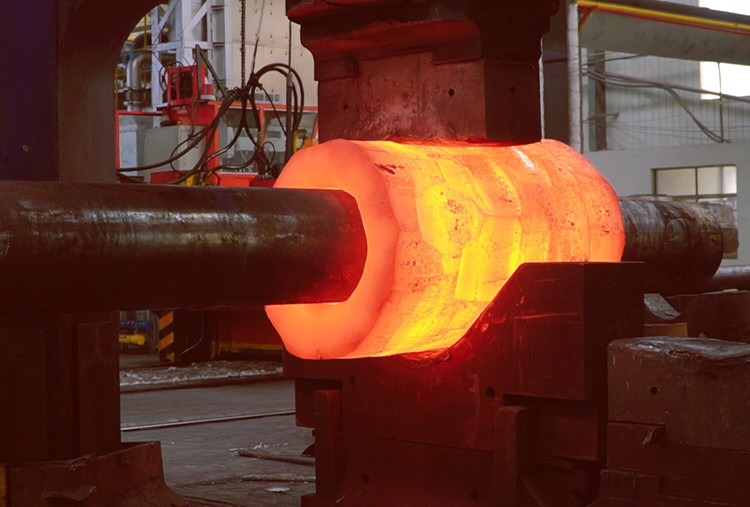- tyler@kirail.com
- +86 15603721115
There are many reasons for forging cracks. Today I will introduce in detail the causes of forging cracks caused by heterogeneous phases (second phases).
The mechanical properties of the second phase in steel are often very different from those of the metal matrix. Therefore, the additional stress generated during deformation flow will cause the overall process plasticity to decrease. Once the local stress exceeds the bonding force between the heterogeneous phase and the matrix, separation will occur and holes will be formed.

For example, oxides, nitrides, carbides, borides, sulfides, silicates, etc. in steel.
Assume that these phases are dense.
Chain distribution, especially weak bonding force along the grain boundaries, will cause cracking during high temperature forging.
The macroscopic morphology of forging cracking caused by the precipitation of fine AlN at the grain boundaries of 20SiMn steel 87t ingots is polyhedral columnar crystals after oxidation.
Microscopic analysis shows that forging cracking is related to the precipitation of a large amount of fine-grained AlN along the primary grain boundaries.
Countermeasures to prevent forging cracking caused by aluminum nitride precipitation along the crystal include:
1. Limit the amount of aluminum added to the steel, remove nitrogen from the steel or inhibit the precipitation of AlN by adding titanium;
2. Use hot delivery ingots and supercooling phase transformation treatment process;
3. Increase the heating temperature (>900℃) and directly heat forging;
4. Perform sufficient homogenization annealing before forging to diffuse the precipitated phase at the grain boundary.